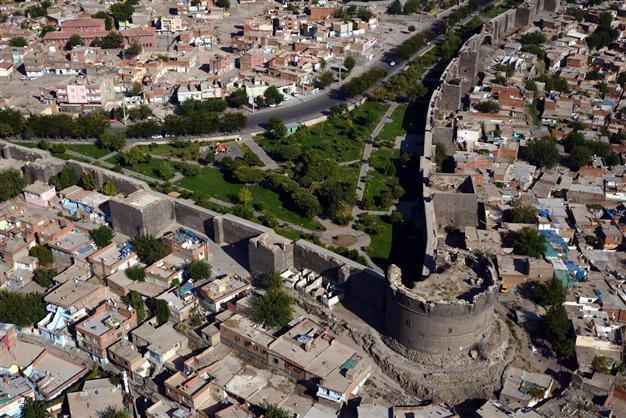City walls, gardens in Turkey’s Diyarbakır added to UNESCO World Heritage list
BONN

DHA Photo
The World Heritage Committee of UNESCO has added cultural sites in Diyarbakır, southeastern Turkey, to its World Heritage List.
The Diyarbakır Fortress and the city’s Hevsel Gardens were inaugurated into the list during the 39th session of the Committee, held in the German city of Bonn late on July 4.
The site was chosen by a unanimous vote of 20 delegates after a Diyarbakir presentation of the International Council on Monuments and Sites (ICOMOS).
“All of the 20 members took the floor in favor of Diyarbakır and stressed that both the conservation plan and the heritage are vital for the humanity, so Diyarbakır was approved for the list with assent and applause,” Prof. Öcal Oğuz, president of the Turkish National Commission for UNESCO, told Anadolu Agency.
Oğuz added that the delegation was also due to discuss the file on the ancient city of Ephesus, in the western Turkish province of İzmir, later on July 5.
In a Twitter post on his official account, Culture and Tourism Minister Ömer Çelik welcomed the inscription of Diyarbakır to the World Heritage List.
“The number of Turkish assets on the list has now increased to 14. Now it is time for Ephesus to put a smile on our faces,” Çelik tweeted.
Diyarbakır Mayor Gültan Kışanak also praised the decision, adding it will lead to the protection and renovation of the city walls and Hevsel gardens.
“Representatives from all countries have supported us in the meeting. This decision has been taken unanimously. We will focus on the protection and renovation of these assets and to contribute to the city’s economy,” she said.
Located on an escarpment of the Upper Tigres River Basin which is part of the so-called “Fertile Crescent,” the fortified city of Diyarbakır and the surrounding landscape has been an important center since the Hellenistic period, through the Roman, Sassanid, Byzantine, Islamic and Ottoman times to the present, the UNESCO website states.
The site encompasses the Amida Mound, known as İçkale (inner castle), the 5.8 km-long city walls of Diyarbakir with their numerous towers, gates, buttresses, and 63 inscriptions from different periods, as well as Hevsel Gardens, a green link between the city and the Tigris that supplies the city with food and water.
Along with Diyarbakır, two Danish sites - Christiansfeld, a Moravian church settlement and the Par Force Hunting Landscape in North Zealand - were added to the UNESCO World Heritage List, as well as the Climats, terroirs of the Burgundy and Champagne hillsides, and Houses and Cellars from France.
